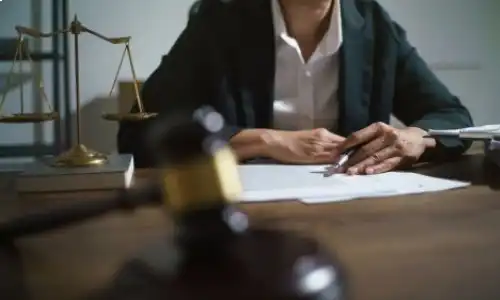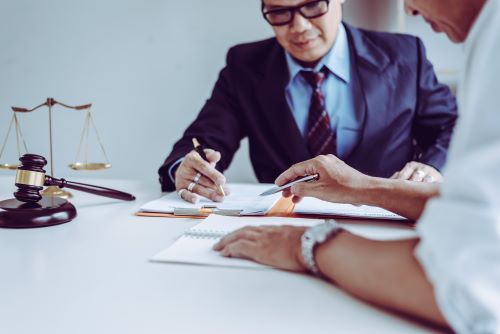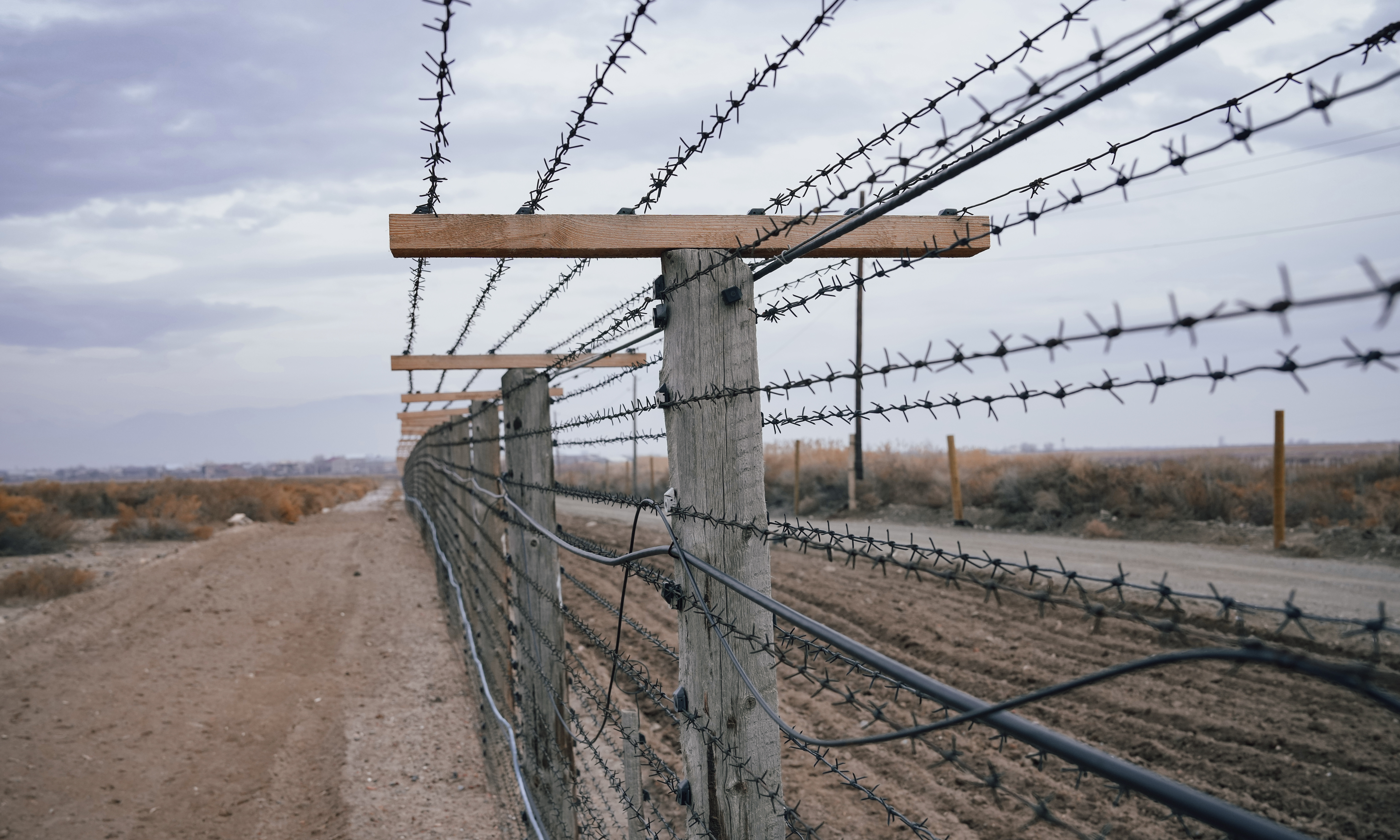
Given the significance of police reports, it is imperative to secure a copy of your car accident report promptly. Equally important is ensuring the report accurately and comprehensively documents the accident details.
Even the slightest errors can significantly impact any subsequent claim or lawsuit.
Car accident reports, also known as CHP 555 forms, are typically written on-scene by responding police officers. In the state of California, however, if police do not respond, drivers are required to report accidents to the California Highway Patrol (CHP) within 24 hours of the accident.
As valuable as accident reports are for a claim, however, many victims often find difficulty in obtaining them. Other times, accident victims may worry that the police report contains incorrect or incomplete information or information they disagree with.
In challenging situations where obtaining accident reports becomes a hurdle, Singh Ahluwalia Attorneys at Law is here to help. We are committed to assisting you at every stage of your insurance claim, including the crucial task of obtaining evidence, such as a police report.
Singh Ahluwalia Attorneys at Law serves as your ally throughout a car accident case and will fight to ensure your legal rights are observed and your needs for a full recovery are met. Contact us today at (559) 878-4958 and get started with your injury claim.
Getting a Police Report in the Fresno Metro Area
Generally speaking, police precincts in the Fresno area offer straightforward means of acquiring accident reports. Different precincts may offer different methods, but you can usually expect at least one of the following ways to be available: online, in-person, or by mail.
Some precincts may also offer additional methods, such as via fax.
A couple of things to consider, however: first, not all accidents require you to file a police report. The California Vehicle Code specifically requires accident reports only for accidents that result in injury or death, meaning accidents resulting in minor damage to property without injury to anyone do not mandate that you visit a police precinct.
Of course, property damage – including to the vehicle – might still mean you need to make an insurance claim, so it is still often a good idea.
Second, and more importantly, it is generally recommended to get a police report as soon as possible. Technically speaking, there is no deadline for obtaining a copy of your report, but its usefulness, as with most evidence, can diminish over time as details start to fade from the memories of people involved, and supporting evidence to the report can be lost.
Another reason you want to get a copy immediately is because of the California statute of limitations for personal injury claims. The state only allows up to two years to take action for bodily injury and three for property damage, meaning if any unfortunate delays hold you back long enough, you forfeit any right to compensation.
How Do Car Accident Reports Affect Fault in a Car Accident Claim?
Police reports alone do not serve as definitive proof of fault or liability in a car accident. That said, the information contained within a car accident report does play a role in assigning it among the parties involved in a crash.
The role of the police officer in determining fault lies in their initial investigation upon arrival at the scene. They speak with witnesses and parties, gathering information which they then review and document in the report.
Once the investigation is complete, they will have in their hands an outline of the situation as they understand it, including the factors that, according to their best estimates, led to the damage. For instance, environmental factors (bad roads, poor signage, dangerous weather) and driver violations (speeding, distracted driving, or DUI) will be mentioned.
Insurance companies will consider each of the factors in order to determine how much of the fault lies with each person in the accident. However, they will also compare and contrast the information from other sources in order to get a full understanding of damages and liability.
Other images that can supplement the police accident report typically include camera footage (dashcams, CCTVs, doorbell cams, etc) or photographs.
One thing to keep in mind when discussing liability in a California car accident is the state’s system of fault. California goes by what is called comparative negligence, which recognizes that accidents are not always only one person’s or party’s fault.
Under comparative negligence, each party involved can take a share of the blame for an accident; it is also possible for none of the parties directly involved to be at fault (though this is rare). This shared degree of responsibility means that unlike in contributory negligence, you are not barred from recovering damages even if you are partially to blame.
You will, however, have your claim reduced by an amount proportional to your degree of fault. This means if you are 30% at fault, you will only be eligible for 70% of the damages from the other party’s insurance company.
This is why a properly documented police report matters so much. It serves as the first factual record of the scene and includes a wealth of information that can be interpreted in a way that affects the value of insurance claims parties make.
Of course, sometimes, an agreement on fault is impossible to reach between two parties. In this situation, a claim my escalate to a lawsuit, which is not uncommon if one of the parties is looking to pursue damages beyond the limits of an insurance policy.
Not every lawsuit will make it to court, of course. Nearly 90% of lawsuits end in some kind of settlement, but way, police accident reports will almost always be included among documents supporting a case.
Information on a California Accident Report
A properly prepared California car accident report should contain key details relevant to an accident. You will usually find that it documents the scene as it was found by the responding officer and contains information pertaining to every relevant party.
Here is the information you should expect to find in the document:
Basic Information
- Date, time, and location: Recording the exact setting of the scene serves to pinpoint the car accident and lower the odds of confusion with similar accidents. It is also useful for investigations and legal proceedings, as timestamps can help police, insurers, and lawyers verify alibis and corroborate or disprove statements that affect a claim.
- Weather and road conditions: Especially useful in an at-fault state such as California, weather and road conditions in an accident report can help determine the degree of liability parties have for any injuries and property damage sustained in an accident. As mentioned, California follows a comparative negligence system, which means any degree of liability not assigned to an accident victim can have a positive impact on their claim.
- Traffic control devices: Traffic lights, signs, road markings, and more all come together to form a single cohesive system that protects the rights of drivers and pedestrians. The presence or absence of these devices at the site of an accident can play a huge factor in determining who had the right of way to do what.
People Involved
- Drivers and passengers: Because driver insurance policies pay for the bulk of damages in car accidents, identification and contact information of both drivers and passengers are collected for an accident report. Passenger information is not always going to be included, but police officers will usually try to do so for the purpose of investigations as well as research in accident statistics and prevention.
- Witnesses: Witness statements can add context for investigators to consider that the police might have missed. Police are not always present in the moment an accident occurs, and witnesses can give them insight into the events that transpired prior to the accident as well as in the time between the accident and the police department’s arrival.
Vehicles Involved
- Descriptions: Each vehicle is described by color, year, make, model, and plate number. This information allows investigators to reconstruct accidents and, especially in the case of hit-and-run investigations, grants police better odds of identifying and apprehending the driver.
- Damage: The officer at the scene will note damage to each vehicle sustained in the accident, separating it from any preexisting damage. Insurers and personal injury lawyers will compare this information against the baseline established by a working model of the car according to the descriptions.
- Insurance: Insurance carriers and policy information will usually be included, again, for the purpose of making claims. If any drivers are uninsured, this will also be noted.
Accident Narrative
The accident narrative describes the events leading up to the accident, the accident itself, and the immediate aftermath, as determined by the responding officer’s initial findings. Information in this section is essentially a summary of what the officer finds out from parties and witnesses on the scene.
Accident narratives will often include sketches or diagrams showing the movement of the vehicles involved and the pathing of any pedestrians. Sometimes, particularly detailed reports will contain the accounts and diagrams according to multiple parties.
Details such as steps different parties took immediately after the accident are also accounted for. For instance, if an accident victim’s injuries are worsened by a bystander’s attempt to move them while they were unconscious, the police officer will mention this.
Contributing Factors
Contributory factors are often included to help understand the causes of an accident and the injuries that result from it. Weather, road conditions, driver sobriety, and more are examples of contributing factors that a police officer might document.
Including these factors in a report has both short-term and long-term benefits for claimants and for the police alike. Consideration of contributing factors allows insurance adjusters and personal injury lawyers to appropriately assign fault, while the state of California uses such data for traffic safety research.
In addition to this, the state can utilize the data for driver improvement programs, leading to potentially safer driving practices and habits among the public.
Finally, insurance companies use large-scale research into risk factors on the road to increase or decrease insurance premiums as necessary to protect their interests and provide their services.
Additional Information
- Citations issued: Citations issued become part of a driver’s permanent record, which influences insurance rates, license suspensions and revocations, and other consequences. As such, they often serve as strong pieces of supporting evidence that the person to whom they are issued is at fault for the accident.
- Towing information: If a vehicle is (or vehicles are) towed from the scene of the accident, this will be noted in the report. This is done for insurance purposes, as the insurer will usually need to know where to find the car in order to assess damages. It is also used by car owners for vehicle recovery. Finally, though minor, towing information has its uses in legal disputes, such as if there is a disagreement regarding the towing costs.
- Injuries: Your car accident report will almost always account for injuries sustained by different parties. This is, of course, crucial for damage assessment in insurance claims. Remember, however, that some injuries are not immediately evident at the moment the report is filed, so you will still need to get medical records from a health provider.
Can I Correct or Change Information in a Police Report?
California has no laws preventing you from attempting to correct information in a police report, though the success of an attempt tends to depend on the specific error and the amenability of the police officer who filed it.
The easiest errors to correct are factual errors, such as names, birth dates, license plate numbers, and primary accident details. Such information is objectively verifiable and, arguably, must be edited in order for a report to be filed for the right case in the first place.
Disputed information, on the other hand, is more difficult to change because it varies across the different people involved in the accident. These are things like witness statements, interpretations of facts, accounts of the event itself, etc.
Changes to both factual and disputed information are documented on supplemental reports rather than on the original police report itself. This is because the crash report is supposed to include only what was known at the time while supplemental reports allow additional information to be included later.
If you must make a change to a police report, here are some steps to follow. Keep in mind these steps are not a guarantee an officer will allow the change, but they may significantly improve your chances of making a change to disputed information.
- Gather supporting evidence: You will need additional documentation to support your correction. You will likely be unable to use the police report itself to support your documentation, though there may be instances where you can make a change by referencing a more accurate part of the police report. If this is not possible, try to get statements from other witnesses to the accident.
- Contact the officer: Politely reach out to CHP or to the appropriate police district to speak with the officer who wrote your report. You will have to explain the error and provide the additional information you prepared in the first step, so take your time and calmly deliver your message. Remember that while backtracking on a document that has already been filed might be frustrating, you are probably far from the first person to ask a precinct for a chance to edit your police report.
- Be respectful: A courteous and professional conversation is more likely to bear fruit than an emotionally charged one. Even if the initial reaction of the officer is negative, you may still be able to turn the conversation your way if you remain calm. Of course, the stress after an accident may make this difficult, so having a lawyer with you may come in useful.
- Supervisor involvement: If no headway can be made by speaking with the officer, you may still request to speak with their supervisor. You will have to explain the situation and present the evidence once again, so maintain the same calm demeanor as before.
In addition to these steps, consider the following:
- Act quickly: The longer you wait before making corrections, the less inclined the police will be to allow your request. Act as soon as you have realized a correction needs to be made. Further, acquiring an accurate police report is only one step to take in the claims process, and you need to get it over with before the statute of limitations expires.
- Alternative reports: If, despite your best efforts, you cannot amend the report, you may try filing a separate report with your insurance company. They will still likely refer to the police report, but they will also consider the alternative document with the context that there are errors in the original police report.
Whatever the situation may be, be clear and concise when explaining the error you would like changed. It’s a common trope that police officers hate the paperwork, but the trope exists because, in this case, it’s true, and having to correct paperwork that has already been completed may understandably be frustrating.
With this in mind, try to focus on facts when attempting to make a correction. Do not get emotional, and do not use emotional language, as the point of a police accident report is to have an objective account of events.
You are more likely to get a change approved if you appear objective.
Finally, avoid having to make a change to a police report alone. Besides the potentially suspicious optics of speaking to a police officer in charge of your accident report alone, having someone else vouch for you can give you a better chance of making a change go through.
Ideally, you want another party involved in the accident to be with you, though this is not always possible. If so, then you can have your car accident lawyer accompany you and speak on your behalf to make sure your concerns are properly brought forward without negatively affecting your case.
Keep in mind that if you successfully make a change to a police report, other parties will likely have to be informed. DO NOT, under any circumstances, attempt to manipulate a police report for personal gain.
Police Precincts in the Fresno Metro Area
Contact Singh Ahluwalia Attorneys at Law for Help With Your California Car Accident Report
A police report will often form the foundation for a strong insurance claim after you’ve been hurt in a car accident in California. We at Singh Ahluwalia Attorneys at Law understand the importance of this document and are ready to help you get it to strengthen your case.
With the right information and the Fresno car accident law firm behind you, you stand the best chance of fair compensation for your losses in a car accident. Contact us today at (559) 878-4958 for a free consultation.


